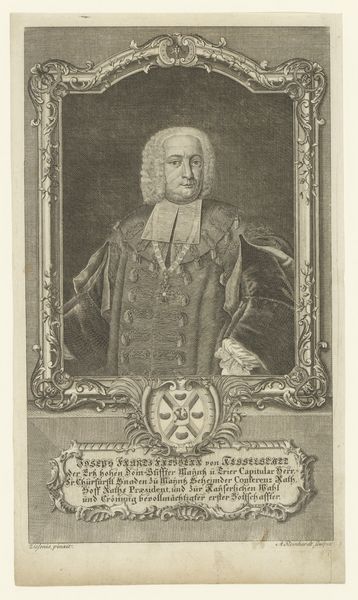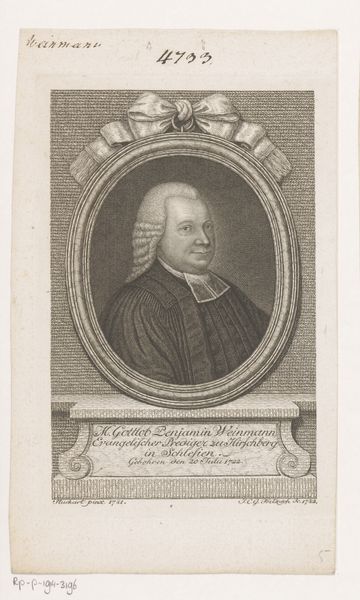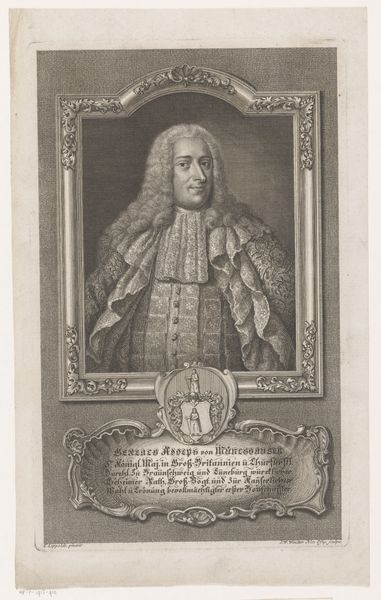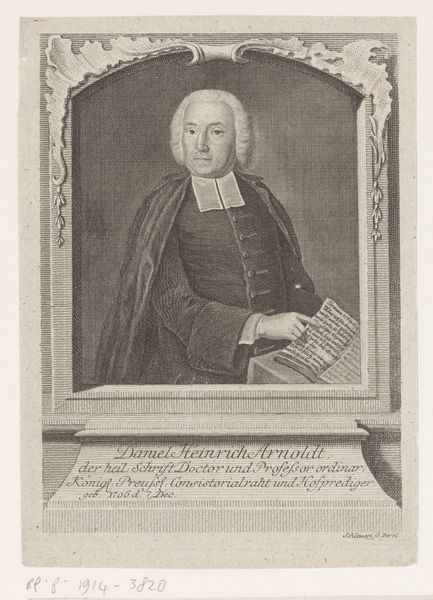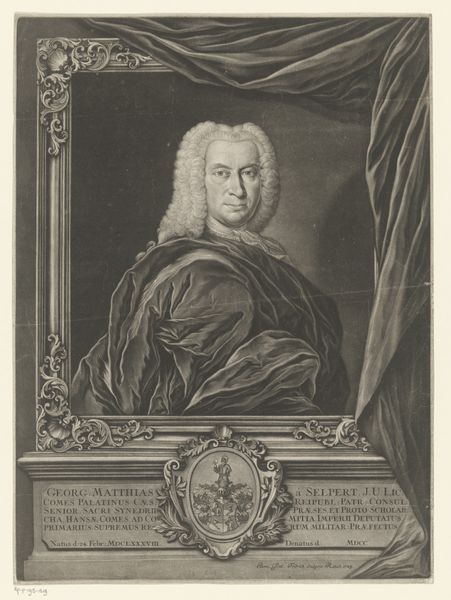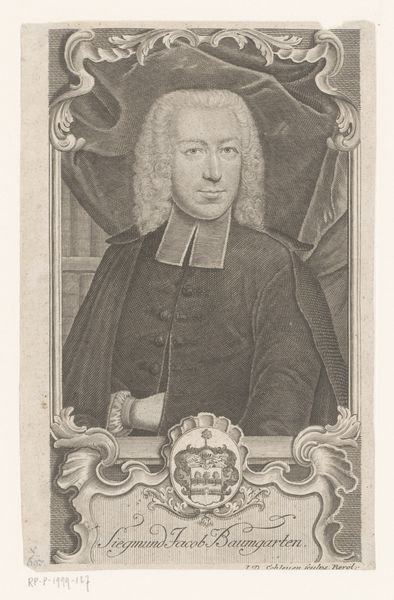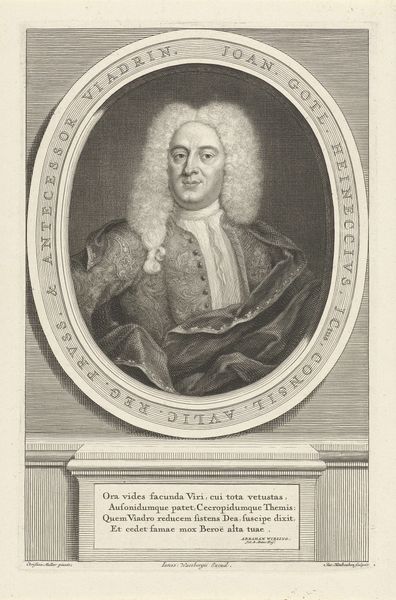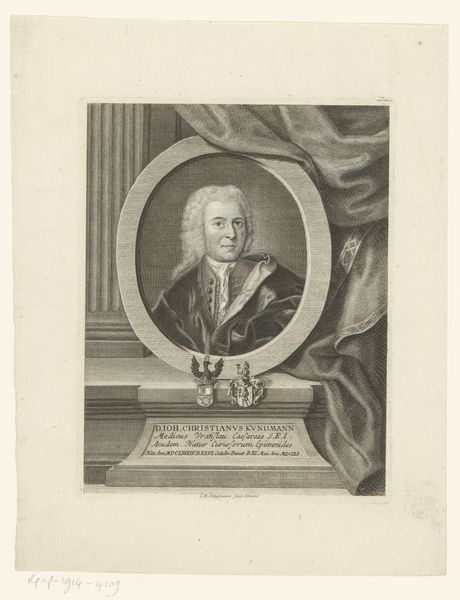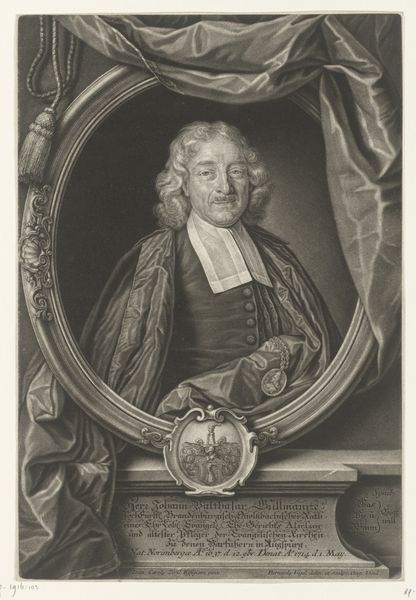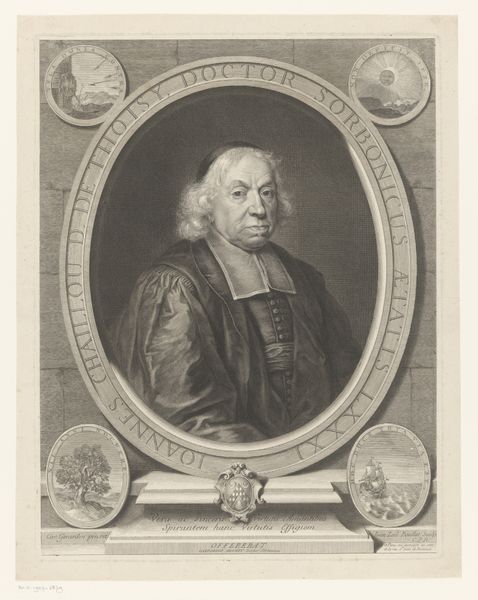
print, engraving
#
portrait
#
neoclacissism
# print
#
historical photography
#
19th century
#
engraving
Dimensions: height 308 mm, width 207 mm
Copyright: Rijks Museum: Open Domain
Editor: So, this is "Portrait of Jean-Charles-Pierre Lenoir" by Justus Chevillet, from 1778. It's an engraving. The first thing that strikes me is the formality of it all. How would you interpret this work, especially considering the time it was made? Curator: Look closely at the symbols Chevillet embeds, it’s an excellent example of neoclassicism’s embrace of order, rationality and virtue, channeling classical ideals. Do you notice the oval frame? Think about its connection to mirrors – what meaning do you find? Editor: That's interesting! It looks like he's standing on a small pedestal too, with a dedication on the front. Almost like he is a monument already, even in his own time. Curator: Exactly. Now, what about the coat of arms just beneath Lenoir’s image? What message do these traditional family symbols carry in revolutionary times? Editor: Hmmm… It could symbolize stability and tradition at a time when those things were about to be challenged and changed completely. Curator: Precisely. He isn’t just portraying a man; he is constructing an image, a visual declaration of worth, rooted in the iconography of class and lineage. Editor: So, the symbols act like anchors, tethering him to a certain cultural memory, regardless of what's to come? Curator: Yes! In this way, visual symbols become time capsules, and sometimes defiant flags of identity in the face of change. Editor: That makes me think differently about the portrait, almost like a cultural artifact! Curator: Indeed! And, just as it spoke volumes then, it still speaks now about identity, aspiration and the enduring power of the symbols we create and inherit.
Comments
No comments
Be the first to comment and join the conversation on the ultimate creative platform.



